- completed
[CsPINs]
Studies on the role of auxin efflux facilitators in the gravity-influenced growth and development of plants
- Biology and Biotechnology
ISS Science for Everyone
SCIENCE OBJECTIVES FOR EVERYONE
The Dynamism of Auxin Efflux Facilitators (CsPINs) Responsible for Gravity-regulated Growth and Development in Cucumber investigation uses cucumber seedlings to analyze gravity’s effect on plants. The investigation examines the formation of small horizontal “pegs” in cucumber plants, which develop near the transition between the plant’s root and stem. Gravity plays a role in where the peg forms. The investigation examines how plants sense gravity, and how gravity affects plant hormone transportation, plant growth and root development, all of which are important for plant cultivation in space.
SCIENCE RESULTS FOR EVERYONE
The force is strong with this one. Plant hormones called auxins help young plants to properly grow in response to changes in the direction of gravitational force. Protein molecules in the Protein Interaction Networks, or PINs for short, carry auxins into and out of developing plant cells and redistribute these hormones where they are needed based on the plant’s sense of gravity. This investigation shows that changing direction of gravitational force causes changes in location of Cucumber PINs and that inner cell layers form canals to efficiently transport auxin. Growth orientation, or auxin chemical inhibitor, can change the normal auxin distribution inside the plant thus affecting its normal growth structure.
Experiment Description
RESEARCH OVERVIEW
- Plants sense gravity as an environmental signal and, use it for governing their morphology and growth orientation. It has been found that the change in auxin efflux facilitators, CsPINs, play an important role in the regulation of gravity-dependent redistribution of auxin, and thereby controls gravimorphogenesis (peg formation) in cucumber (Cucumis sativus L.) seedlings. Moreover, it has been found that gravitropism interferes with hydrotropism in cucumber roots, in which also the change in auxin efflux facilitators may also play a role. In this space experiment, cucumber seedlings are used to analyze the effect of gravity on the expressions of CsPINs, and unravel their contributions to peg formation. At the same time, hydrotropism from gravitropism in roots is differentiated and compared the expression of CsPINs to figure out the interacting mechanism between the two tropisms. Dry cucumber seeds are launched, and imbibed and grown under either microgravity, or 1G conditions, in the Cell Biology Experiment Facility (CBEF) of ISS. Immediately after the experiment, seedlings are fixed using RNAlater, and refrigerated until recovery on earth. Investigations of morphology and the expressions of CsPINs are done as post-flight analyses.
- Auxin efflux facilitators, CsPINs, play an important role in the regulation of gravity-dependent redistribution of auxin and thereby control gravimorphogenesis, or how gravity affects plant growth.
- Investigators could analyze the effect of gravity on the expressions of CsPINs, and try to better understand their contributions to peg formation.
- The investigation seeks to develop new techniques for controlling plant growth via regulation of auxin transport, morphogenesis, and root hydrotropism (new tools/methods for plant cultivation in space).
DESCRIPTION
The expression pattern of auxin efflux facilitator, CsPIN1, changes in response to gravity. This could be responsible for auxin reduction, and thereby suppression of peg formation on the upper side of the transition zone in cucumber seedlings.
The expression pattern of CsPIN5 changes in response to moisture gradient and gravity, which could be responsible for auxin redistribution in hydrotropically and gravitropically responding roots of cucumber seedlings.
Using microgravity environment, the investigation seeks to verify that gravity and moisture gradient induce the changes in expression patterns of CsPINs proteins.
Media Gallery
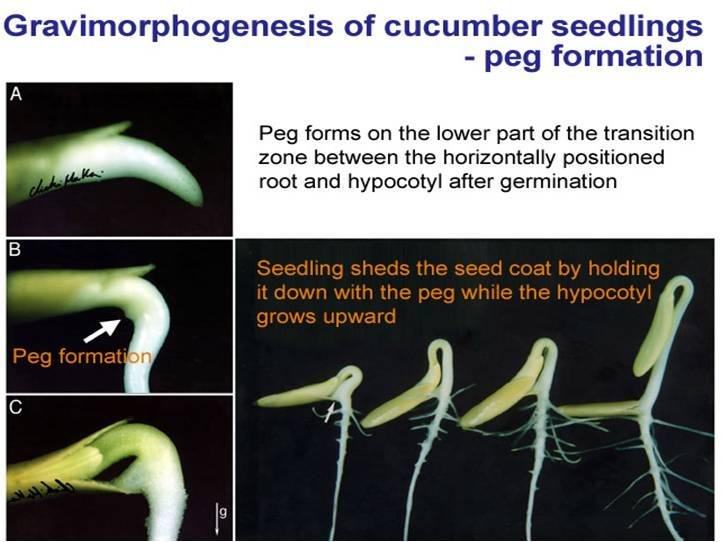
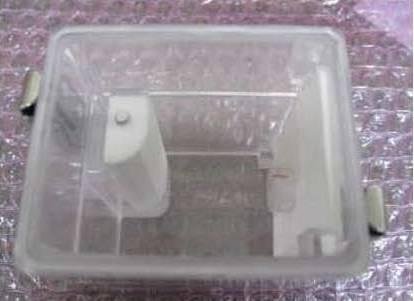
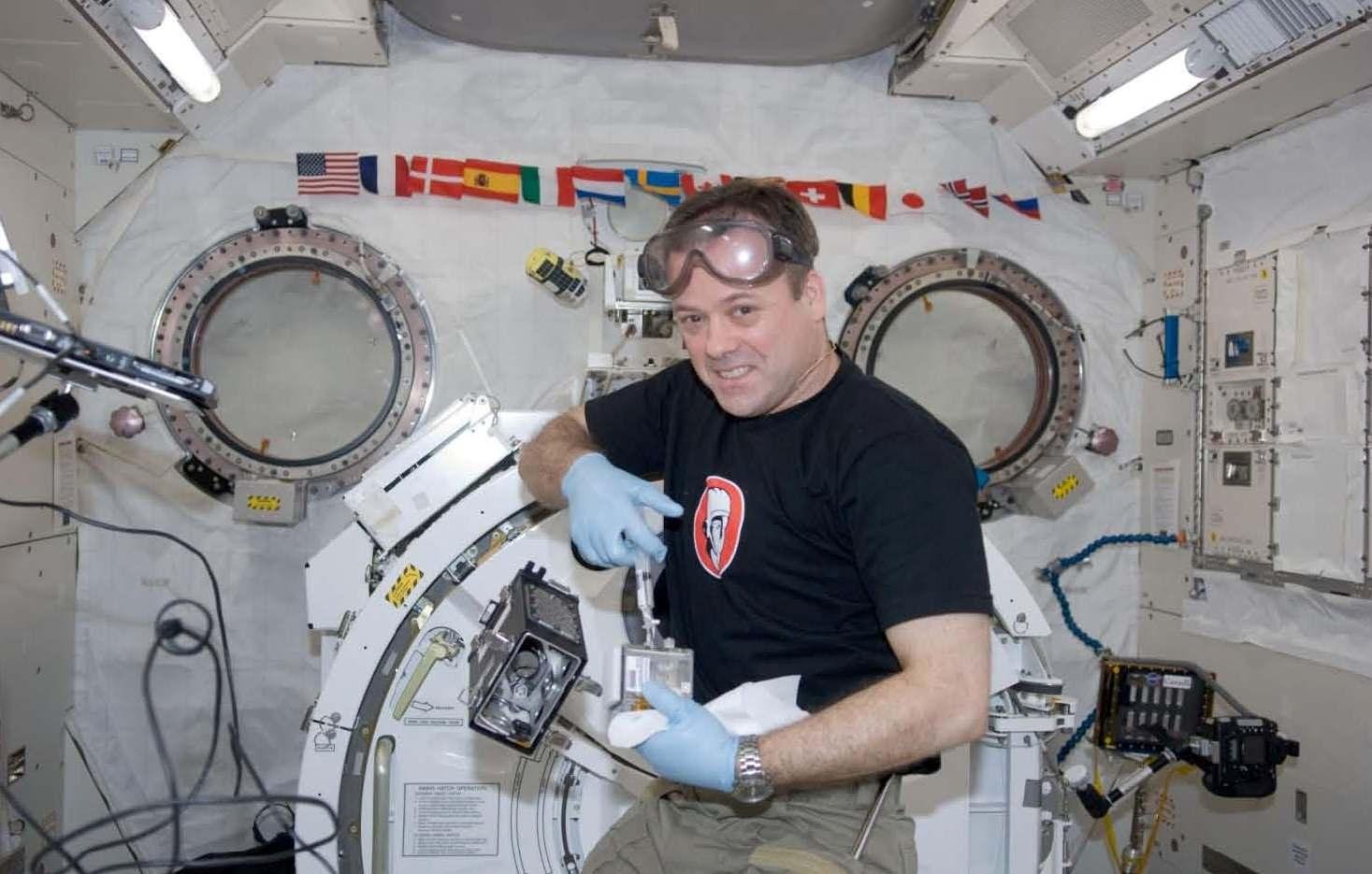
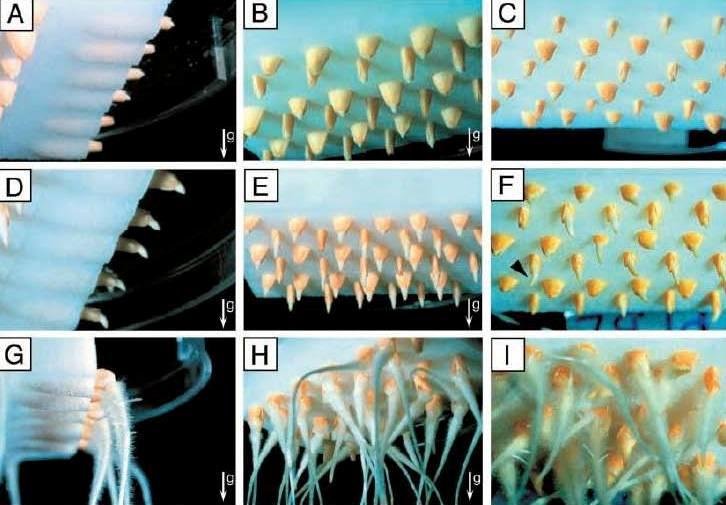

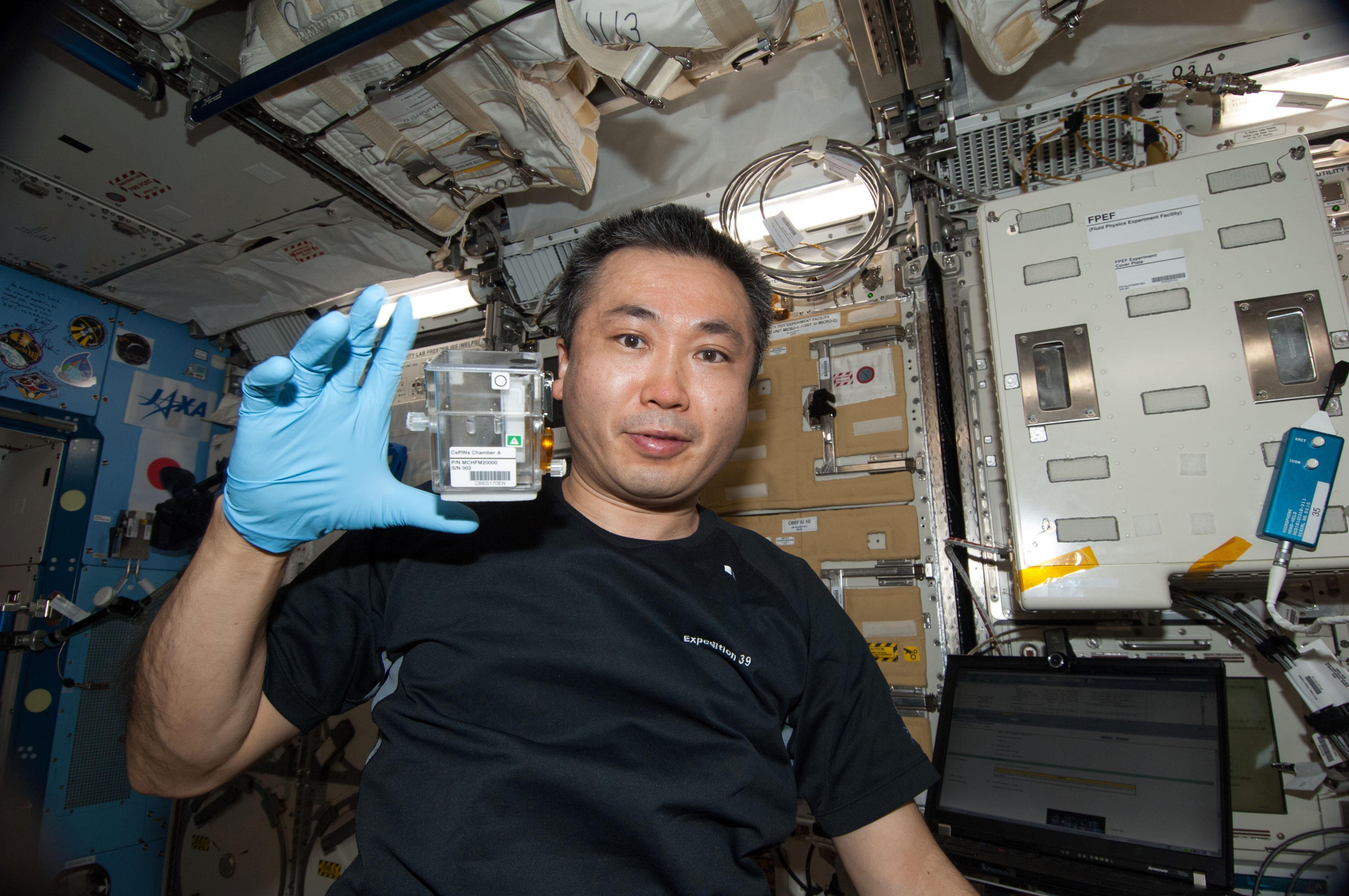
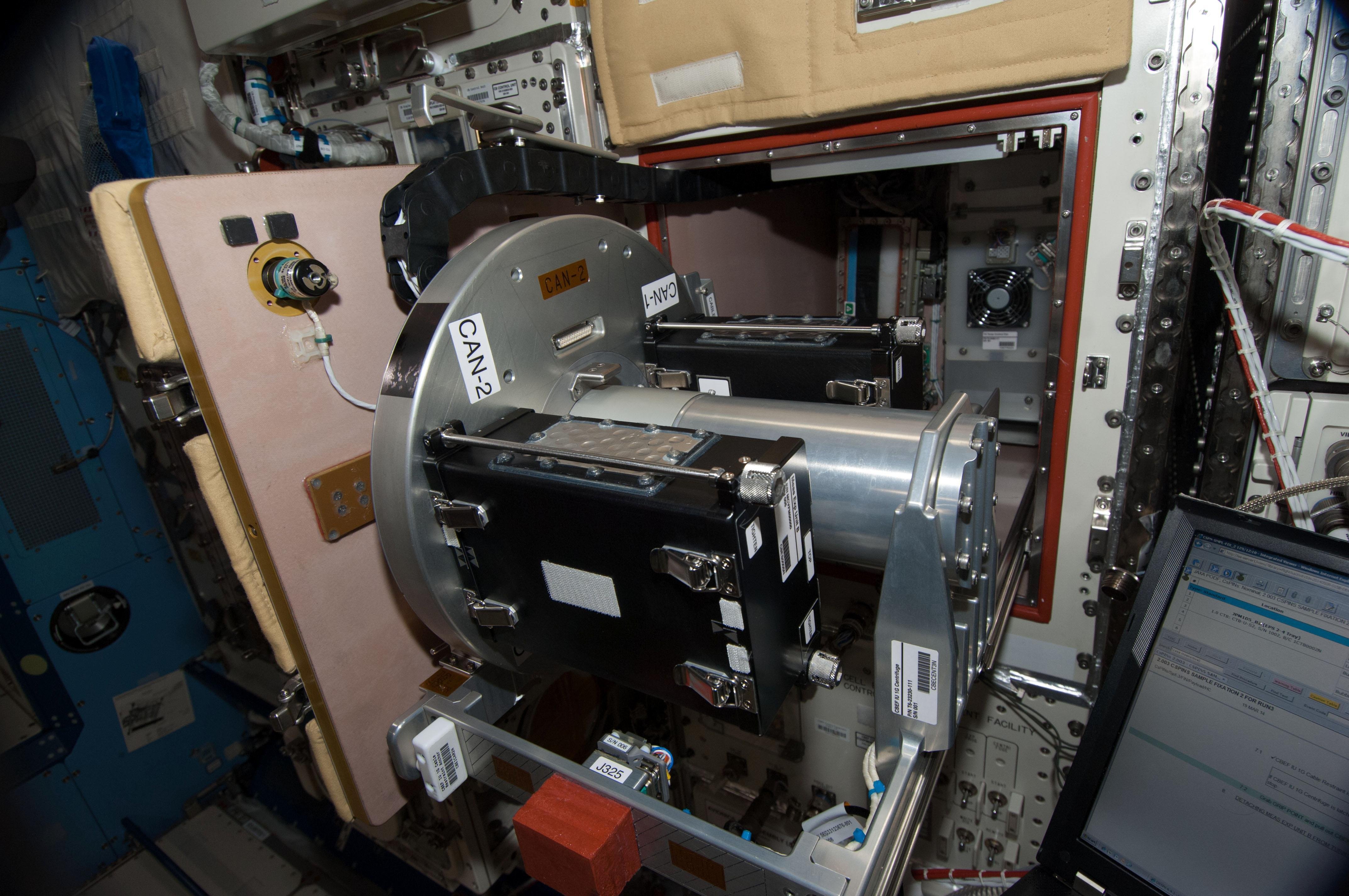
Applications
SPACE APPLICATIONS
CsPINS enables new techniques for studying how plants sense gravity and determine which direction to grow. Auxin is a type of plant hormone involved in the formation of pegs in cucumber seedlings, which are a gravity-related physical trait, that develop between the plant’s roots and its stem. Understanding how plants sense gravity could enable new genetically modified variants that can grow in microgravity.
EARTH APPLICATIONS
Run3: 5 chambers which contains 7 cucumber seeds each incubate 18 hours +/- 1 hour under micro gravity, 1 chamber is removed and fixed, and the 4 other chambers are incubated under micro gravity . After incubation, the samples are videotaped using a G1 camcorder, and chemically fixed by RNAlater. After fixation of the samples, the Chemical Fixation Chambers, containing the samples, are kept at +2 oC in MELFI and recovered at +4 oC on earth.
Operations
OPERATIONAL REQUIREMENTS AND PROTOCOLS
Run3: Cucumber seeds are incubated 18 hours +/- 1 hour under micro gravity condition, then incubated 4 hours, or 8 hours under micro gravity, or 1G artificial condition . After incubation, samples are videotaped using a G1 camcorder, and chemically fixed using RNAlater, and placed in Chemical Fixation Chambers. The Chemical Fixation Chambers containing the samples are stored at +2 oC in MELFI, and recovered on earth at +4 oC.
Run3: Cucumber seeds are incubated 18 hours +/- 1 hour under micro gravity condition, then incubated 4 hours, or 8 hours under micro gravity, or 1G artificial condition . After incubation, samples are videotaped using a G1 camcorder, and chemically fixed using RNAlater, and placed in Chemical Fixation Chambers. The Chemical Fixation Chambers containing the samples are stored at +2 oC in MELFI, and recovered on earth at +4 oC.
Publications
PRINCIPAL INVESTIGATOR(S)
TAKAHASHI Hideyuki [Tohoku University]
Unless specified otherwise, rights to all images belong to ©JAXA



